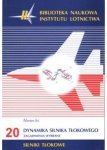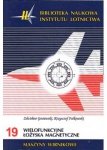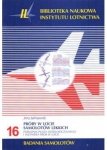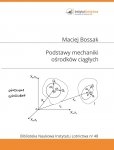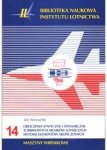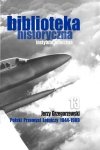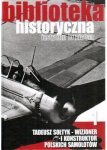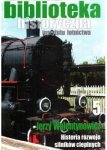-
Załączniki bezpieczeństwa
Załczniki do produktuZałączniki dotyczące bezpieczeństwa produktu zawierają informacje o opakowaniu produktu i mogą dostarczać kluczowych informacji dotyczących bezpieczeństwa konkretnego produktu
-
Informacje o producencie
Informacje o producencieInformacje dotyczące produktu obejmują adres i powiązane dane producenta produktu.Instytut Lotnictwa
-
Osoba odpowiedzialna w UE
Osoba odpowiedzialna w UEPodmiot gospodarczy z siedzibą w UE zapewniający zgodność produktu z wymaganymi przepisami.
The first idea of implementing continuously rotating detonation into propulsion systems came into my mind in early seventies of the last century, when during my half-year stay at the Institute of Theoretical and Applied Mechanics of the Siberian Branch of the Soviet Academy of Sciences in Novosibirsk in 1972, I learned about pioneering research on structure of the gaseous detonation and especially on a very detailed measurement of the structure of the spinning detonation, as well as continuously rotating detonation in a disc-like chamber. During the eighties and nineties of the last century the only research I was engaged in concerned the detonation of gas, dust and hybrid mixtures. It was not until the turn of the XXIst century that I began working on the idea of application of the continuously rotating detonation to propulsion systems. At that time I started frequently visiting prof. Toshi Fujiwara from the Nagoya University in Japan and I convinced him to begin working together on the development of this idea. He also visited us many times and during those visits work with as on this subject. We commenced researched dedicated to gaining the patent in which the biggest attention was focused on the use of centrifugal force to allow self-supporting propagation of the spinning detonation front. At the same time Jan Kindracki started to work on his PhD. Subject of his work was directly connected to this problem and the work’s title was “Experimental Research and Numerical Simulations of the Initiation of Continuously Rotating Detonation in Gaseous Mixtures” (original title in Polish: “Badania eksperymentalne i symulacje numeryczne procesu inicjacji wirujacej detonacji gazowej”). Also at that time scientists from Singapore A*STAR Agency for Science, Technology and Research showed their interest in beginning a joint research on developing propulsion system based on continuously propagating detonation and a specially devoted project of cooperation was initiated between the Warsaw University of Technology (WUT) and the Singapore Institute of High Performance Computing. Under this project scientists from Singapore were engaged in numerical simulation while at WUT experimental research was conducted. At the Nagoya University prof. Fujiwara and Dr. Hishida conducted the first 2-D detailed calculations of initiation and structure of Continuously Rotating Detonation (CRD) in gaseous hydrogen-oxygen-argon mixture. This prompt experimental research at WUT and also raised interest in such research at the Institute of Aviation, which on its part applied for a research grant from special founds of the Ministry of Economy. Application was successfully approved and the research was initiated under the project number UDA-POIG.01.03.01-14-071/09-00-POIG. This research had been conducted during the period of 2010-2014 and ended with demonstration of short operation of a gas turbine engine running on kerosene, as well as on gaseous hydrogen. Hydrogen widened the scope of the gas turbine engine efficiency, making it exhibit improvement in performance by 5-7%, as compared to the base engine running on kerosene. Institute of Aviation, under internal grants, also supported research focused on the development of a specially designed liquid fuel supply system which allowed to perform a stable operation of the CRD in a cylindrical chamber with air. Such research succeeded with stable operation of the CRD in a cylindrical chamber supplied with Jet-A and gasoline fuels.
Autorzy: Praca zbiorowa pod redakcją Piotra Wolańskiego
ISBN: 978-83-63539-45-0
Oprawa: miękka, klejona
Rok publikacji: 2021
Wydawnictwo: Wydawnictwa Naukowe Sieci Badawczej Łukasiewicz-Instytutu Lotnictwa
Liczba stron: 242
Język wydania: angielski





